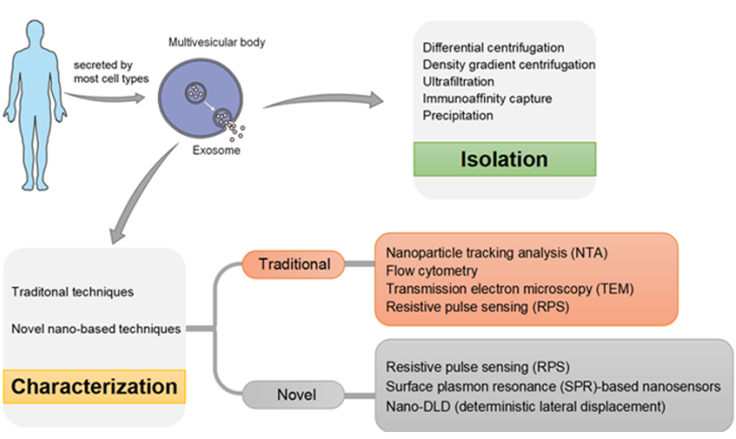In recent years, the research on exosomes has raised widespread attention from the scientific and the business community. On the one hand, the exosomes participate in various biological processes such as angiogenesis, tumor metastasis, and immune escape through intercellular communication; on the other hand, exosomes can be obtained from blood, urine, etc., which is more convenient and has non-invasive injury compared with traditional tissue biopsies. Meanwhile, the sample amount of circulating tumor cells (CTCs) and cell-free DNA analysis is larger than exosomes which is easier to obtain, so the exosomes have great prospects in the field of liquid biopsy. Exosomes, a kind of microvesicle with a diameter of 30-100 nm, can be derived from almost all cell types and contain many specific cytokines, ligands and receptors, mRNA, miRNA and a small amount of DNA. The properties above provide the convenience for exosome isolation and characterization. However, the application of exosomes in scientific research and clinical diagnosis is limited by the sensitivity of extraction and separation techniques. Therefore, the development of targeted and highly sensitive technologies is crucial for the further study of exosomes.

Exosome are cell-derived vesicles that are present in many kinds of cells. There is a need for the optimization of isolation and characterization methods, which can be divided into traditional and nano-based novel techniques, of exosome to support the relative research. All of these methods have the advantages and limitations, so they can be used for different experimental objective.
Ph.D. students Zhang Mengdi in Dr.Zhang’s group is the first author. Dr. Zhang is the corresponding author of this article. This work was supported by the a special program from Ministry of Science and Technology of China, the Chinese National Natural Science Funds, Jiangsu National Science Foundation and Zhejiang outstanding youth fund.
Link: https://onlinelibrary.wiley.com/doi/abs/10.1002/smtd.201800021



